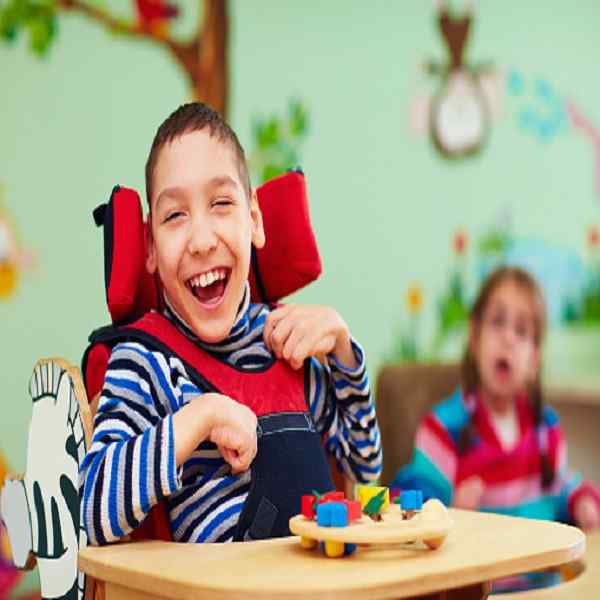What is Cerebral Palsy ?
Cerebral palsy is also known as CP in short form, Basically it is a problem with the brain and muscles in children, which occurs in about 2 to 3 out of 1,000 children over the age of three years.

According to a survey, about 500,000 children and adults in the country are suffering from this disease. Cerebral Palsy caused by an injury to some part of the brain, which is one of the most common disease occur in children.
This disease is not contagious nor progressive, which means – the symptoms of this disease neither increase nor worsen over time. However, many symptoms may vary from child to child and depending on the type of the symptoms and condition of the children.
It can be determined which child will need the kind of help. For example, if a child has a severe condition, he may need specialized support and equipment, while a child with fewer symptoms will need relatively little help.
Various Causes of Cerebral Palsy
We all want to know the causes and factors of this disease, or whether this disease can ever be cured or not. Earlier, some doctors believed that the main reason for having cerebral palsy was not getting the right amount of oxygen to the baby in the uterus, but according to new research, there are very few cases in which due to lack of oxygen to the baby, they get cerebral palsy.
Not all children with cerebral palsy are born with the disease, in some cases children develop the disease during their brain development period shortly after birth. Some of the causes of having cerebral palsy are as follows:
1.Due to lack of proper blood flow to the brain
2.Due to head injury
3.due to brain injury
4.Certain infections such as meningitis or encephalitis (meningitis)
Types of Cerebral Palsy
Based on the symptoms and the part of the brain affected, cerebral palsy is divided into the following four types:
1.Spasticity cerebral palsy
2.Dyskinetic cerebral palsy
3.Ataxic cerebral palsy
4.Mixed cerebral palsy
Spasticity cerebral palsy
This type is the most common type and is found in the majority of cases. People with spasticity cerebral palsy have very toned muscles, due to which their muscles remain very stiff, due to this disease they have to face difficulty in moving from one place to another place.
Spasticity cerebral palsy is also further divided into 3 parts on the basis of the affected organs:
Spastic diplegia– this affects the lower part of the body; which affects the way a person moves. In many cases, the hip muscles tighten so much that the thigh muscles move inward and pull together to focus on the knees, creating a scissor-like shape, also known as a scissoring.
Spastic hemorrhage– this affects only one side of the body; In such cases, the hands are more affected than the feet, making it difficult to lift objects.
Spastic quadriplegia– This affects both the upper and lower limbs of the body, thus making it the most severe form of spasticity cerebral palsy. Whoever suffers from this disease not only has problems related to muscles but also has to face problems like intellectual malaise, seizures, hearing problems, speech and vision problems.
Dyskinetic cerebral palsy
It is the second most common type of cerebral palsy and includes symptoms such as dystonia (frequent speech or difficulty speaking), athetosis (writing movements), and chorea (inability to move properly). For such people, the walking speed can either be slow or can be very jerky and also very fast.
Ataxic cerebral palsy
In Ataxic cerebral palsy, the person with this type of CP may have great difficulty walking, speaking, eating, or making sudden movements.
Mixed cerebral palsy
In mixed cerebral palsy where a person’s symptoms consist of a mixture of two or more symptoms.
How to Diagnosis of cerebral palsy
To diagnosis cerebral palsy, there are many ways to diagnosis CP,the best way to diagnose it is to take care of your child’s muscles.
Some symptoms are as follows-
1.Motor skills – how the child grasps or learns to walk
2.Leaning to one side of the body
3.Difficulty standing even with support
4.Stiffness in legs
5.Back bending of the baby’s waist when lifting
Test for diagnose CP
Some tests that can tell whether your child has CP or not. Some common methods of testing include:
1.Brain scan- MRI, cranial ultrasound.
2.Electroencephalogram (EEG)– This test, usually done in children who have seizures, records your child’s brain activity using a series of electrodes.
3.Lab tests– Blood and urine tests can help rule out genetic and metabolic problems.
4.Miscellaneous tests – To tell which part of the body is affected by cerebral palsy, you may be referred to specialists who can help diagnose the following:
1.Vision
2.Hearing
3.To speak
4.Development
Moreover, no take a look at can detect cerebral palsy or cerebral palsy whereas the infant continues to be within the womb.
Therapy of cerebral palsy
Physiotherapy is the best treatment for those patients who suffered this illness or Medicines, surgical procedure and remedy are the commonest types of remedy for this illness. Surgical procedure involving muscle launch, tendon launch, hip dislocation, or scoliosis could be useful for youngsters in lots of circumstances.
Remedy like Aqua, Music, Behavioral, Bodily and Bowel and so on. are additionally very useful in lowering weak spot in kids.
Even non-archaic strategies reminiscent of botox and plaster contribute drastically to the correction of cerebral palsy immediately. By making use of botox to the muscle tissue, it removes the stiffness of the muscle tissue and offers them stamina.
Whereas the plaster may also help to stop extension of the decrease limb of the kid which might later assist in regular motion and scale back the stress within the muscle tissue.